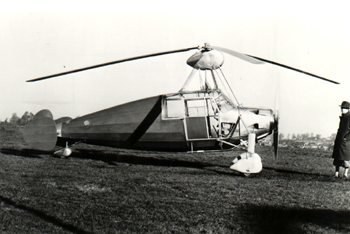- Joined
- 19 October 2012
- Messages
- 1,976
- Reaction score
- 1,907
Interesting that is is quite different in several respects from the IV and Wessex. In many ways it looks more like a Fokker or Avro design
















Schneiderman said:3-view of the J.8 "Jet Welkin" with Delanne layout found in Aviation News vol 9 number 20 Feb/March 1981
Two answers; first Richard Payne mentions these in 'Stuck on the Drawing Board' but does not provide details. Second, if these projects existed they would have been unsolicited. The Air Min and MAP did not put the the requirements from the Brabazon Committee out to tender, they were allocated to companies based on an assessment of their free design capacity taking into account any military work. The requirement went directly to Airspeed in mid 1943, who then proceeded to deviate from the official specification thereby shooting themselves neatly in the foot and handing a great opportunity to Vickers - The Viking filled the gap they left empty and the more advanced Viscount easily out competed the Ambassador.From, British Aircraft Specifications File,
what was those Westland Projects ?.
Hi,
there is an impression artist picture from Flightglobal to unknown
fighter belong to Westland company, I think it was not Wyvern.
http://www.flightglobal.com/pdfarchive/view/1945/1945%20-%201538.html
I can't ID this Westland Project,of course the date of this artist drawing was from 1945,and maybe it was related to Whirlwind,but it was not it,
because the later was appeared in 1940/1941 ?.
I was wondering if that was the case myself.I can't ID this Westland Project,of course the date of this artist drawing was from 1945,and maybe it was related to Whirlwind,but it was not it,
because the later was appeared in 1940/1941 ?.
Perhaps an ill-informed impression of the Westland Welkin? No real information on the Welkin was released to the public until after the war.
The left picture also appeared in Aircraft of the Fighting Powers, Vol VI. It's not in any of the other volumes though. The right picture is a Hawker P.1030.Hi,
there is an impression artist picture from Flightglobal to unknown
fighter belong to Westland company, I think it was not Wyvern.
http://www.flightglobal.com/pdfarchive/view/1945/1945%20-%201538.html
Many thanks to my dear Tony Buttler,
to put this unknown Project in his book,BSP 3.
Most likely artwork that went with the original design for the P.9/Whirlwind. Here is the mock-up from May 1937From Flying magazine 1945-2,
I can't ID this Westland Project,of course the date of this artist drawing
was from 1945,and maybe it was related to Whirlwind,but it was not it,
because the later was appeared in 1940/1941 ?.
Most likely artwork that went with the original design for the P.9/Whirlwind. Here is the mock-up from May 1937From Flying magazine 1945-2,
I can't ID this Westland Project,of course the date of this artist drawing
was from 1945,and maybe it was related to Whirlwind,but it was not it,
because the later was appeared in 1940/1941 ?.
First, the caption does not mention that the artwork appeared in an advertisement. Second, Westland advertisements from 1944 - 1946 featured a number of speculative ideas for future aircraft, jet airliners, jet flying wings and fighters, that were never real Westland designs. This twin engine concept does not appear in any of them. Without knowing which 'British publication' was the source for the artwork there is not much we can say. It most certainly did not come from either Flight or AeroplaneMost likely artwork that went with the original design for the P.9/Whirlwind. Here is the mock-up from May 1937From Flying magazine 1945-2,
I can't ID this Westland Project,of course the date of this artist drawing
was from 1945,and maybe it was related to Whirlwind,but it was not it,
because the later was appeared in 1940/1941 ?.
But the advertisement in 1945,and they mentioned in the text,a new design to
Westland ?!.
Well looking into the CL.10B I came across a reference to the Westland CL.20, which was derived from the CL.10B. What the differences were was not revealed, Here's the pic of the sole example of the CL.20 which was built and flew. Other airframes were completed but due to control problems and the oncoming war, the project was abandoned. Nearly forgot the source was http://history.whl.co.uk/cierva_cl_20.html. Also found a second pic, source is https://elpoderdelasgalaxias.wordpress.com/2015/01/07/westland-cl-20-second-best/


With a Pobjoy Niagara V engine producing a maximum of 126 horsepower, that autogyro was probably under-powered.Well looking into the CL.10B I came across a reference to the Westland CL.20, which was derived from the CL.10B. What the differences were was not revealed, Here's the pic of the sole example of the CL.20 which was built and flew. Other airframes were completed but due to control problems and the oncoming war, the project was abandoned. Nearly forgot the source was http://history.whl.co.uk/cierva_cl_20.html. Also found a second pic, source is https://elpoderdelasgalaxias.wordpress.com/2015/01/07/westland-cl-20-second-best/

View: https://twitter.com/clark_aviation/status/1596813079588872194
Yes, and here it is as an illustration in a Westland patent along with the nose turretI believe this is the missing 'Pterodactyl VI'; having a nose turret, this was to fly at the head of an escorted bomber formation, with the rear turreted Pterodactyl V flying to the rear, and thus giving all round protection . . .
cheers,
Robin.
Interesting that the Patent drawing shows an open pilot's cockpit, whereas the one in Post#66 shows an enclosed cockpit. Since the Pterodactyl V also had an open cockpit, would an open cockpit for the 'VI be more likely if built ?Yes, and here it is as an illustration in a Westland patent along with the nose turret
The Westland F.5/33 Project.
Yes,it's MK.VI.
